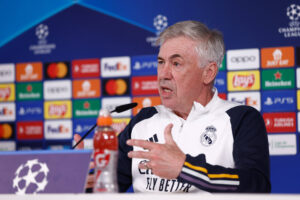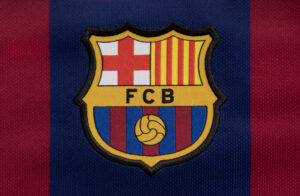Not all football managers win the Premier League in their first season in charge, especially after coming from a nation with a different footballing philosophy like Italy. There have been legendary Italian coaches to have managed English teams – Carlo Ancelotti, Claudio Ranieri to name a few. But none of those come even close to a personality like Antonio Conte.
With a national team head-coach duty off his check-list, Conte joined Chelsea just before the 2016/17 season. Chelsea’s most successful manager Jose Mourinho had failed to maintain his supremacy a season before. His sacking had just piled up an entire mountain’s pressure on The Godfather.
Conte struggled with a few road-blocks at the beginning of the season. The cause? A clear mismatch between the coach’s style of play and the team’s philosophy. It took a major 2-0 defeat at the Emirates against big-time rivals Arsenal for Conte to wake up from his English nightmare.
The Downfall of Antonio Conte at Chelsea
Conte’s Catenaccio
The debacle at Arsenal fast-tracked Conte’s intentions to revolutionize the club’s system to his own style – a back-three modified version of the Catenaccio.
During his time with Juventus for the major portion of the 2000s, the Italian head coach had used a three-man defence with high-operating full-backs. This is the system Juventus continued for almost a decade after Conte’s departure.
A major problem for him was the tactical misfit of John Terry. Chelsea’s long-serving captain was incompatible playing in a three-man backline. This led to Conte’s first big decision of dropping Terry and promoting youngster Andreas Christensen.
The second big tactical change was to build a balanced midfield. Conte required a box-to-box midfielder to be coupled with a deep-lying playmaker.
Chelsea had three options for two spots available. With Cesc Fabregas being the master of creative arts, the decision of choice had to be between Nemanja Matic and newcomer N’Golo Kante.
After only a few training sessions, Conte knew that the Frenchman was a total upgrade over the worn-out Serbian.
The last and probably one of the most important tactical tweaks was the introduction of two versatile wing-backs. Two players who can play both attacking and defensive roles on their respective flanks.
Conte chose to promote a full-back and demoting an attacker to his required wing-back role. Marcos Alonso on the left-wing and Victor Moses on the right in the 2016/17 season might just go down as one of the deadliest combinations in the history of the league.
English Clubs Fail to Counter Conte
This was the first time in Premier League history that a club had consistently deployed a three-man defence with high flying wing-backs. This led to the other clubs failing to combat this new style of play.
Jose Mourinho’s Manchester United could only park the bus, Jurgen Klopp’s Liverpool were no match and Pep Guardiola’s Manchester City could not contain Conte’s Chelsea rapid counter-attack from the wings.
On the other hand, the bottom half clubs who struggled against Chelsea even before the Conte era had an even tougher time as the system was like a typhoon that hit them at every error.
The pundits were proven wrong. The three-man defence did not deter Chelsea from having the most clean-sheets (16) in the competition. The Blues also managed to concede only 33 goals which was the third-best figure in the league.
After a poor run of performances in the first half of the season, Chelsea went on to win the Premier League title despite the unfavourable odds.
The Downfall of Antonio Conte
There were emotions of euphoria among the Chelsea fans. Everyone, including the critics, believed that it was the start of the new Conte era; similar to what Juventus had seen in Italy. But destiny and Pep Guardiola had other plans.
The Italian Catenaccio and its various modifications had always been toppled by Dutch and Spanish philosophies of total football. This is what led Guardiola to the answers of questions raised by Conte in the previous season.
Catenaccio had always suffered against zonal marking. This is because the Italian tactic strictly sticks to a disciplined man-marking approach. Also, Conte’s Catenaccio’s main weapons were his wing-backs which could be easily neutralized if they could be tracked back by opposition’s attackers.
Pep Guardiola checked exactly all the boxes which could paralyze Conte’s style.
A very disciplined manager tactically, Conte had no Plan B if his formula failed on the pitch while his competitor Guardiola arrived with multiple plans if things went wrong. This was the beginning of the downfall for Conte.
While Guardiola hit back at Conte with his tactics, the other teams also played their part.
Right from bottom half clubs like West Ham United to top guns like Tottenham Hotspur, the formation was being replicated. This made it difficult for the Londoners to create the kind of impact that they had last season.
Final Nail in the Coffin
A fall-out with striker Diego Costa was the final nail in the coffin for the Italian Godfather.
Chelsea has always been infamous for their player power being the higher authority amongst the entire club staff. Diego Costa’s favoured teammates eventually started falling out with their boss and the season ended with a lot of turbulence around Stamford Bridge.
It was not just another bad phase for the club.
The tactical prowess going to waste in addition to constant falling out with the players led Roman Abramovich to believe that Antonio Conte’s time was done and dusted. Another Italian successor was making his impact in Naples.
Conte’s Italian Reunion
After his sabbatical from European football, Conte is currently the head-coach at Inter Milan where the fans are excited about him bringing the good times back to the blue half of the city.
Conte still continues to stick to his three-man defence and his own version of the Catenaccio, but he has surely learnt from his mistakes at Chelsea. A dynamic tactical profile of players is currently being built at Inter and if the Italian manager cracks the code for his failures, we can see another European sleeping giant come back to life soon.
Main Photo






